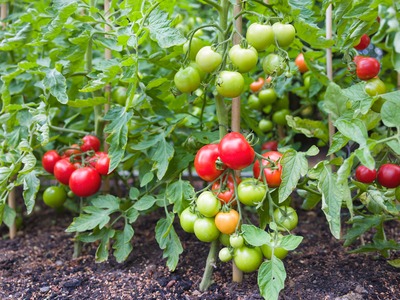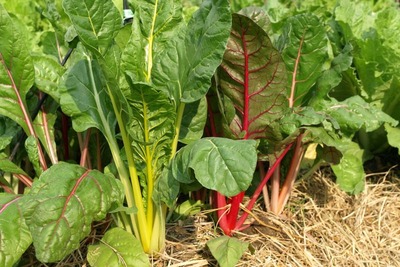As summer temperatures rise, maintaining a productive garden can feel daunting. However, certain vegetables thrive in the heat with minimal care, allowing you to enjoy fresh produce without the stress of constant attention. Here’s a comprehensive look at ten low-maintenance vegetables that not only withstand sweltering summer conditions but also provide bountiful harvests.
1. Tomatoes

Tomatoes are a summer staple that can thrive in hot weather. With a wide variety of cultivars, there’s a tomato for every garden. They are rich in vitamins A and C, potassium, and antioxidants like lycopene, which may contribute to heart health.
Growing Tips
- Varieties: Choose heat-tolerant varieties like ‘Heatmaster’ or ‘Solar Fire.’ Indeterminate types will continue to grow and produce throughout the season.
- Watering: Water consistently at the base of the plant to avoid wetting the leaves, which can lead to diseases. Aim for 1-2 inches of water per week.
- Mulching: Apply a layer of mulch to conserve moisture and suppress weeds.
2. Zucchini

Zucchini is a prolific producer, making it perfect for summer gardens. This fast-growing squash is low-maintenance and versatile in the kitchen. It is low in calories and high in fiber, making it a great addition to a healthy diet. It’s also rich in vitamins C and B6.
Growing Tips
- Planting: Sow seeds directly in the garden after the last frost. Space them about 2 feet apart to allow for their broad leaves.
- Watering: Like tomatoes, zucchinis prefer consistent moisture. Water deeply once a week.
- Pest Control: Check for squash bugs or cucumber beetles, and consider using row covers early in the season for protection.
3. Eggplant

Eggplants are another heat-loving vegetable that requires little maintenance once established. They thrive in full sun and can produce throughout the summer. They are rich in fiber, vitamins B1 and B6, and antioxidants, contributing to heart health and weight management.
Growing Tips
- Varieties: Choose compact varieties like ‘Fairy Tale’ or ‘Patio Baby’ for smaller spaces.
- Watering: Provide consistent moisture, especially during fruit development. Deep watering once a week should suffice.
- Fertilization: A light application of balanced fertilizer every few weeks can boost production.
4. Okra

Okra is a heat-tolerant vegetable that thrives in hot weather, making it ideal for summer gardens. Its unique flavor and texture add diversity to dishes. It is a great source of vitamins C and K, as well as fiber. It can aid digestion and may help regulate blood sugar levels.
Growing Tips
- Planting: Sow seeds directly in the garden after the last frost. Space plants about 12-18 inches apart for optimal growth.
- Watering: Okra is drought-resistant once established, but regular watering during dry spells promotes better pod production.
- Pest Control: Keep an eye out for aphids and other pests, but okra typically has few problems.
5. Peppers

Peppers, both sweet and hot varieties, thrive in the heat and are relatively low-maintenance. They can be grown in containers or directly in the garden. They are rich in vitamins A and C, and they contain antioxidants that may help reduce inflammation and improve heart health.
Growing Tips
- Varieties: Choose heat-loving varieties like ‘Cayenne’ for hot peppers or ‘Bell Boy’ for sweet ones.
- Watering: Water deeply once a week, ensuring the soil dries slightly between waterings to prevent root rot.
- Mulching: Mulch around plants to retain moisture and keep weeds at bay.
6. Beans

Beans, particularly bush varieties, are excellent low-maintenance crops that thrive in the heat and enrich the soil with nitrogen. They are an excellent source of protein, fiber, and essential vitamins like folate and iron, making them a valuable addition to any diet.
Growing Tips
- Planting: Sow seeds directly in the garden after the last frost. Space bush beans about 2 inches apart in rows.
- Watering: Water regularly, especially during dry spells, but avoid overhead watering to reduce disease risk.
- Pest Control: Beans generally resist pests, but watch for aphids and spider mites.
7. Sweet Potatoes

Sweet potatoes are a nutritious, low-maintenance crop that loves the heat. They require minimal attention and can be harvested well into fall. They are high in fiber, vitamins A and C, and antioxidants, promoting eye health and overall well-being.
Growing Tips
- Planting: Start with slips (young plants) after the last frost. Plant them about 12 inches apart in well-drained soil.
- Watering: Water weekly during dry periods, especially when the plants are establishing.
- Weed Control: Use mulch to suppress weeds, as sweet potatoes do not compete well.
8. Cucumbers

Cucumbers are another summer favorite that grows rapidly and requires minimal care. They can be eaten fresh, pickled, or added to salads. They are low in calories and high in water content, making them a refreshing snack. They also provide vitamins K and C.
Growing Tips
- Varieties: Opt for heat-tolerant varieties like ‘Slicing’ or ‘Pickling’ cucumbers.
- Watering: Water consistently, ensuring the soil remains moist but not soggy. Use soaker hoses or drip irrigation for best results.
- Support: Use trellises to support climbing varieties, improving air circulation and reducing disease risk.
9. Swiss Chard

Swiss chard is a resilient leafy green that can tolerate heat and produce well into fall. Its colorful stems add beauty to any garden. It is packed with vitamins A, C, and K, as well as minerals like magnesium and potassium, promoting overall health.
Growing Tips
- Planting: Sow seeds directly in the garden in early summer. Space plants about 6 inches apart.
- Watering: Water consistently, as chard prefers moist soil. Regular watering will also help keep the leaves tender.
- Harvesting: Harvest outer leaves regularly to encourage new growth while allowing the inner leaves to mature.
10. Radishes

Radishes are quick-growing root vegetables that thrive in the summer heat. They can be harvested in just a few weeks, making them a perfect choice for impatient gardeners. They are low in calories and high in vitamin C and fiber. They may aid digestion and promote a healthy immune system.
Growing Tips
- Planting: Sow seeds directly in the garden, spacing them about 1 inch apart in rows. You can plant radishes every few weeks for a continuous harvest.
- Watering: Water regularly to keep the soil moist, as inconsistent watering can lead to bitter or pithy roots.
- Pest Control: Radishes have few pests, but watch for flea beetles and aphids.